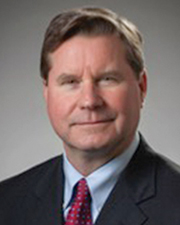
Bentall Kennedy/NewTower Trust
In my early March article entitled, “Navigating Real Estate Cycles – Are We in a 7th Inning Stretch?” I indicated that the two most influential and potentially disruptive forces to this current market cycle were U.S. trade tensions and Fed actions. Just one month later, surprises have surfaced that could help send the economy into an extended economic recovery or perhaps disrupt conditions and inch us closer to an economic recession. Uncertainty is such today that the path of growth in the short-term could lead in either direction but to quote the legendary Yogi Berra, “when you come to a fork in the road, take it!” So let’s review what forces have changed, what outcomes might result, and how one might manage a commercial real estate portfolio under these uncertain conditions.
During their March 19-20 meeting, the FOMC signalled a more dovish stance with their economic projection dot plots indicating future rate increases would likely be put on hold for the duration of 2019. In addition with the inflation outlook muted, quantitative tightening via reductions to the Fed’s balance sheet would end this September. In response to this new information, the 10-year U.S. treasury rate declined in a span of a week by over 20 bps to below 2.4%. With this decline the yield curve inverted for approximately a week beginning on March 22, as measured by the difference between the 3-month and 10-year treasury rates. Past sustained yield curve inversions have been an indicator that a recession is nine to fifteen months away. The magnitude and duration of this inversion will need to be monitored in order to evaluate the potential for and timing of an oncoming recession.
The ongoing trade negotiation between the U.S. and China represents perhaps the most significant risk regarding future domestic and global economic growth. Completion of a trade agreement would likely drive an accelerated growth spurt in the U.S. economy during the second half of 2019 while the inability to find a resolution would likely result in weaker economic conditions. As a result, the market is caught between the expectation of one to two potential rate cuts by a dovish Fed later this year in the case of a delayed agreement and the possibility of a rate hike if a trade agreement were to materialize. However in the near-term, rates should settle near recent levels with the yield curve flat to slightly inverted with the 10-year treasury in a trading range around 2.5%.
During all of this volatility and uncertainty, U.S. commercial real estate market fundamentals have and should continue to remain generally healthy for the medium-term. Cap rates have persisted near historic lows due to a combination of heavy investor demand and income growth expectations across most sectors, although rent increases are slowing. As a result, pricing has proven resilient, especially for properties offering income growth potential and for those with stable, credit tenancy and lease term. Facing these conditions, what investment tactics and strategies might one consider up-and-down the risk spectrum and capital stack to better navigate this maturing real estate cycle?
For more risk-averse investors, an up-in-quality investment approach can help to reposition and prepare a portfolio for an eventual downturn through purchasing better-located, better-designed/built properties while selling non-core or functionally obsolete ones during a time when attractive pricing and market liquidity still exist. In past cycles, higher quality, more “core” properties have been the last to fall and the first to recover during economic downturns and recoveries.
In general, locking in occupancy and lease term with new tenants and/or existing tenants through blend-and-extend negotiations beyond the duration of a potential downturn can help to reduce the risk profile of properties, helping to grow or preserve value. Undertaking major capital projects such as enhancements to tenant amenity offerings for instance, can better position properties competitively among their peers in either defensive or accretive manners as possible economic downturns approach. For those investors willing to assume more risk and/or those with conviction that an expanded cycle will materialize, (re)development is still seen as profitable at this late stage in the cycle given current and anticipated property pricing. However, feasibility is dependent on a project’s basis, as well as its time and cost to construct, lease-up and stabilize. Land prices have generally escalated over recent years due to the growth in achievable market rents while construction costs have been increasing more than three times the rate of inflation – both make development projects more challenging to pencil.
Given market conditions today, in general all of these opportunities and potential strategic maneuvers can be realistic considerations. As I shared last month, since this mature real estate cycle still feels like it has a few innings remaining we will need to watch trade policies and Fed actions to best anticipate when this prolonged game might end and prepare – perhaps using a variety of the approaches listed above. I have certainly heard from more than one industry colleague that in this market and under these conditions, it feels as if players need to “keep one foot on the gas while keeping one foot on the brake” to remain relevant, competitive and profitable.
David Levy, CRE, CFA, MAI, MRICS, is the chair of New England Chapter of The Counselors of Real Estate, and is senior vice president at Bentall Kennedy (U.S.) LP, Wellesley Hills, Mass.








